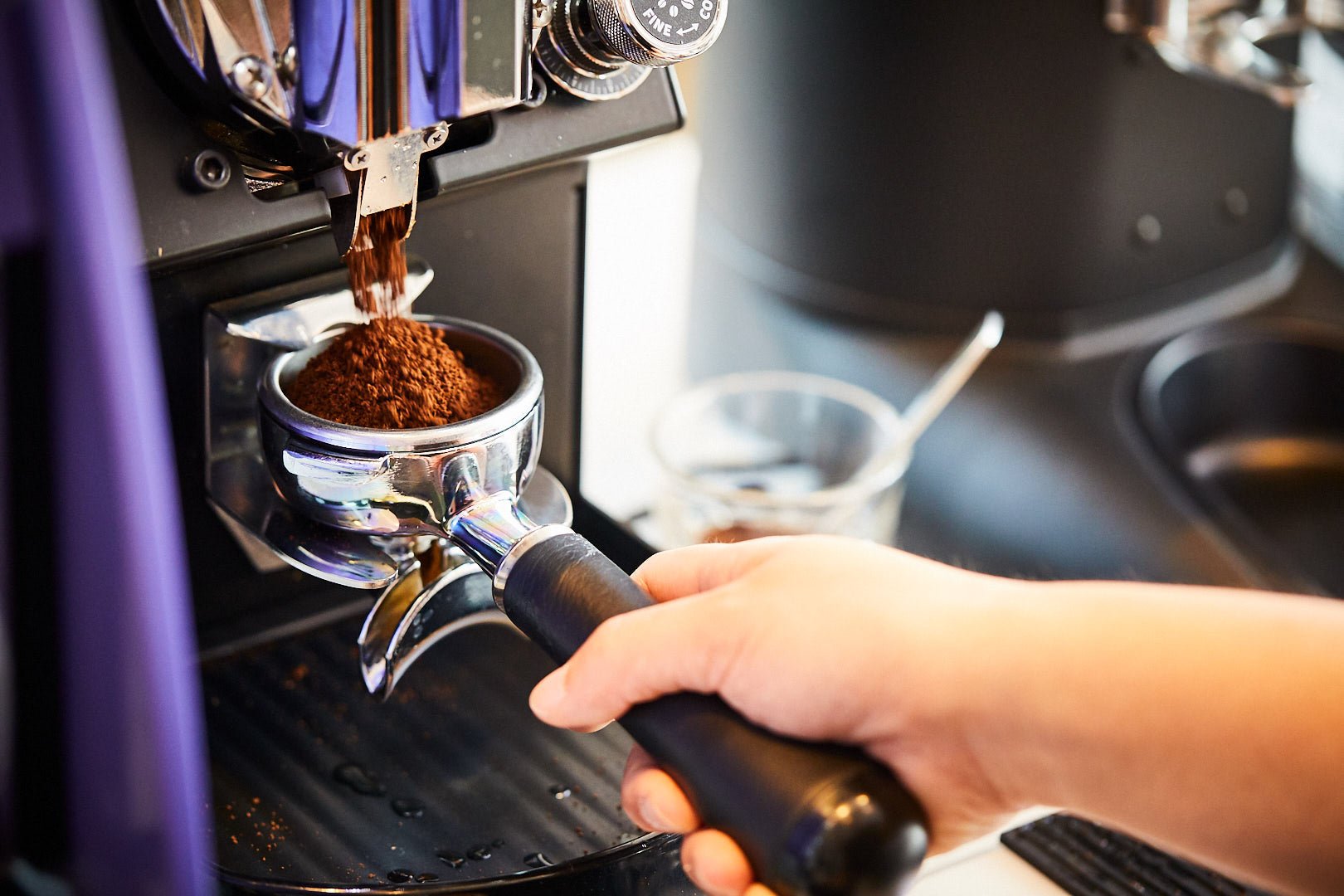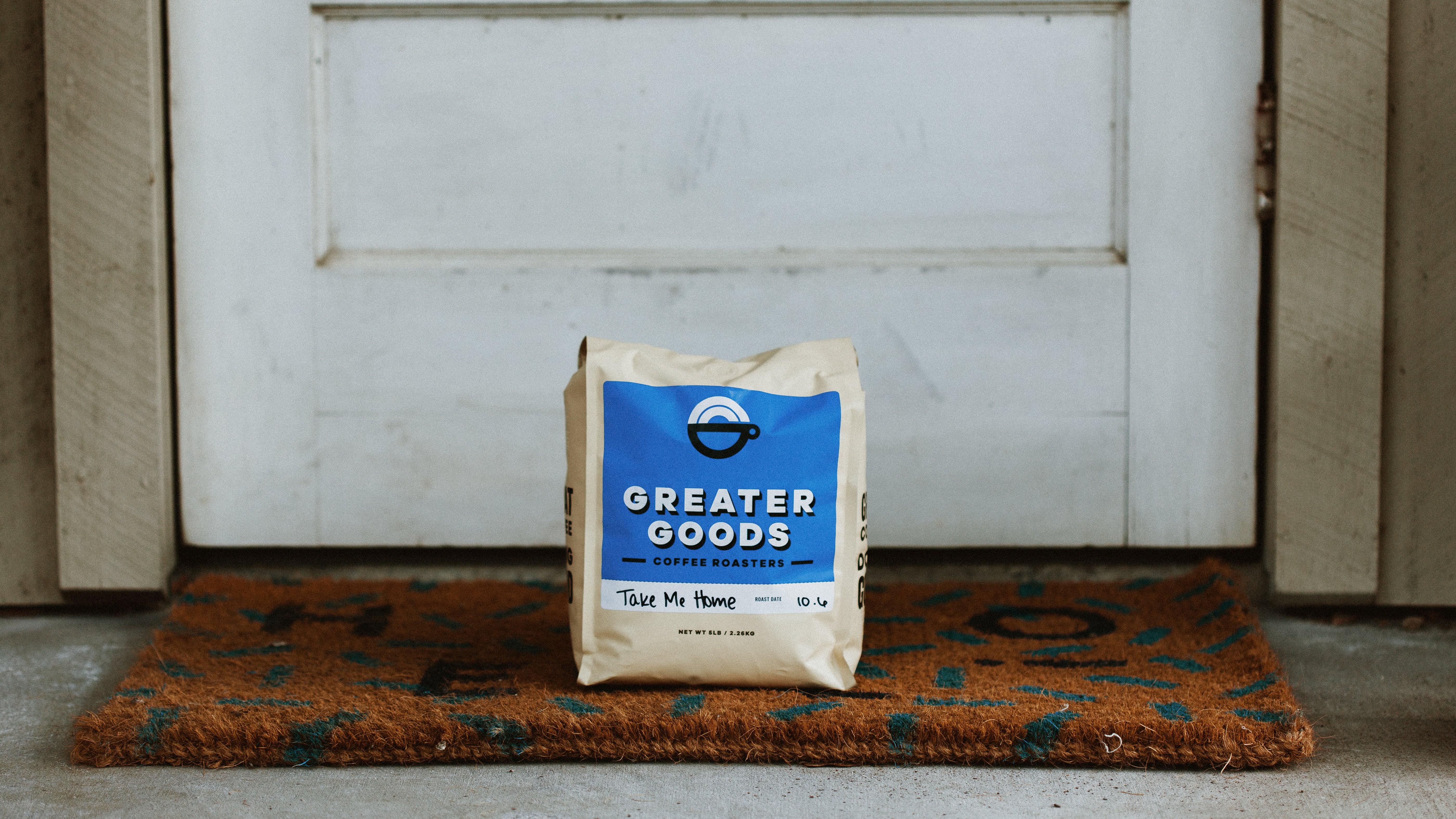This article was written during COVID-19, but is intended to be referenced in the future. If you are planning to travel during this pandemic, please check travel restrictions and resources for your destination and please, be safe.

When packing my bags to visit relatives, I make sure to have the essentials: a phone charger, a good book, my collection of cleansers and creams (adult acne FTW), and a little bit of CBD (you know how it is).
In exchange for a couch or, if I’m lucky, a guest bedroom, I’ll also pack a bag of coffee in my suitcase. It’s a souvenir from Austin, and it’s an experience we can enjoy together. You make breakfast, I’ll make coffee. Good deal! That is, until I realize the only brewing equipment in my dad’s kitchen is the Keurig we bought him for Christmas in 2011.
A wise woman (aka GG founder Khanh Trang) once told me that a good barista can make great coffee with or without all the accoutrements of a state-of-the-art cafe. I’m here to put her wisdom to the test, but mostly I’m here to help you make our coffee incredible no matter the circumstances.
The following are a series of scenarios (read: nightmares) and solutions. In any case, we strongly suggest filtered water and grinding fresh before brewing, if possible.
Scenario #1: Ye Old Mr. Coffee
Ahh, ol’ faithful. The machine that gets the job done with minimal fuss, as Uncle Bill might say.
Before you go shoveling coffee into that paper filter, I need you to clean the brewer. Trust me, it’s worth it.
The natural oils in coffee can impart dirty and undesirable flavors into your cup over time. A little bit of soap and water should do the trick. If you’re noticing scaling around the water reservoir, you'll need some descaler. If you really can't wait, you can try to use the vinegar trick. Be sure to thoroughly rinse before you brew.
Another hack for your automatic machine is to manually agitate the grinds at the beginning of the brew. High-quality machines are engineered to fully wet the entire bed of grounds, but the more inexpensive models tend to spit water out of one hose or spout. Stirring the slurry with a spoon early in the brew can help saturate all the grinds and increase extraction.
Scenario #2: The K-Cup Club

No need to beat around the bush with this one: People love to hate the Keurig. All opinions aside, these automatic machines can be found in more than 11 million homes worldwide and guess what? Those people deserve specialty coffee, too.
We did some pretty extensive R&D to dial-in Fresh Perspective for a reusable K-Cup and found this article by the Washington Post immensely helpful. Here's the recipe:
Make sure the Keurig is clean. Add pre-boiled hot filtered water to your reservoir. Add 2 tablespoons (approx. 12g) of medium-fine ground Fresh Perspective (a 10 on the Encore) to a reusable pod. Brew on the smallest cup setting (177ml).
Scenario #3: Whole Beans, No Grinder
You wake up early and stoked to brew some GG for the whole fam. You get out of bed, go to the kitchen, break open the bag, and realize you totally forgot to ask the barista to grind it. Fear not!
If you’re planning on brewing with a drip machine or pour over, your best bet would be to mask up and head to your local grocery store. Most will have a commercial burr grinder available for customer use, but I’d recommend calling and asking before heading out the door.

If you’re using a french press, making cold brew, or if you really don’t want to leave the house, the next best thing would be to grind the beans using a food processor or blender. These are not unlike a blade grinder, which slices the beans (albeit inconsistently) to prep them for brewing. Shoot for a coarse grind for immersion brewing and a medium grind for drip.
Even if you blend your coffee to oblivion, you’ll probably still see some bigger pieces in the mix. A consistent, even grind is key for optimizing flavor, so ideally you’ll do it right before brewing. We know that’s not always possible, so if you plan on running through that bag in a week or so, we’d be more than happy to grind it for you.
Scenario #4: Everything But a Scale
This one goes out to my hardcore coffee people, the ones that pack their V60s in their carry-ons. I know this is probably a minority of readers, but I personally identify with Scenario 4.
I live and die by my brew ratios (measured in grams and milliliters), but I am not very good at math. So when I read the recipe on our bags - 2 tablespoons of coffee for every 6 ounces of water - I am paralyzed. My frantic Google searches elicit more numbers, more measurements, more confusion. Let’s simplify these fractions right now, once and for all:
2 tablespoons of coffee = approx. 12g, depending on the beans
6 ounces of water = approx. 177ml
Which means…
For every 3 ounces (88.5ml) of water, you need 1 tablespoon (6g) of coffee.
If I want to brew a whole pot of coffee using a 8-cup brewer, I need to use 48 ounces of water. 48 divided by 3 = 16-ish tablespoons of coffee. Nice! I’m writing this word problem on a notecard and hanging it on the fridge as we speak.
Again, not all coffee weighs the same. Two tablespoons of ground coffee isn’t going to necessarily be two tablespoons of whole bean coffee. It all depends, but this is a good place to start. Next step? Pull the plug on the scale of your dreams.

Scenario #5: Nothing. Literally nothing.
I know it might be hard to believe, but some people just don’t make coffee at home. They could be the most caffeinated human on the planet, buying two lattes a day, every day, for the last six years, and yet they've never once contemplated the idea of home brewing.
Maybe they just enjoy the feeling of “going out” for coffee. Perhaps they’d prefer to pay the pretty penny for an espresso they know is going to be delicious, rather than spend their Sunday watching how-to videos and reading articles like this one (no shame).
Nevertheless, you spent some hard-earned cash on that bag of beans and you shan’t waste it! If your host has zero brewing equipment whatsoever, surely they have a pot and some water. You can brew like a cowboy, brew like a European, or brew like the Americans do and just make cold brew. And if for some reason you have a sous vide but not a coffee pot... Well, I'm confused. But there's a video for you, too.
On second thought, maybe you should just bring some instant. ;-)
Cheers!



